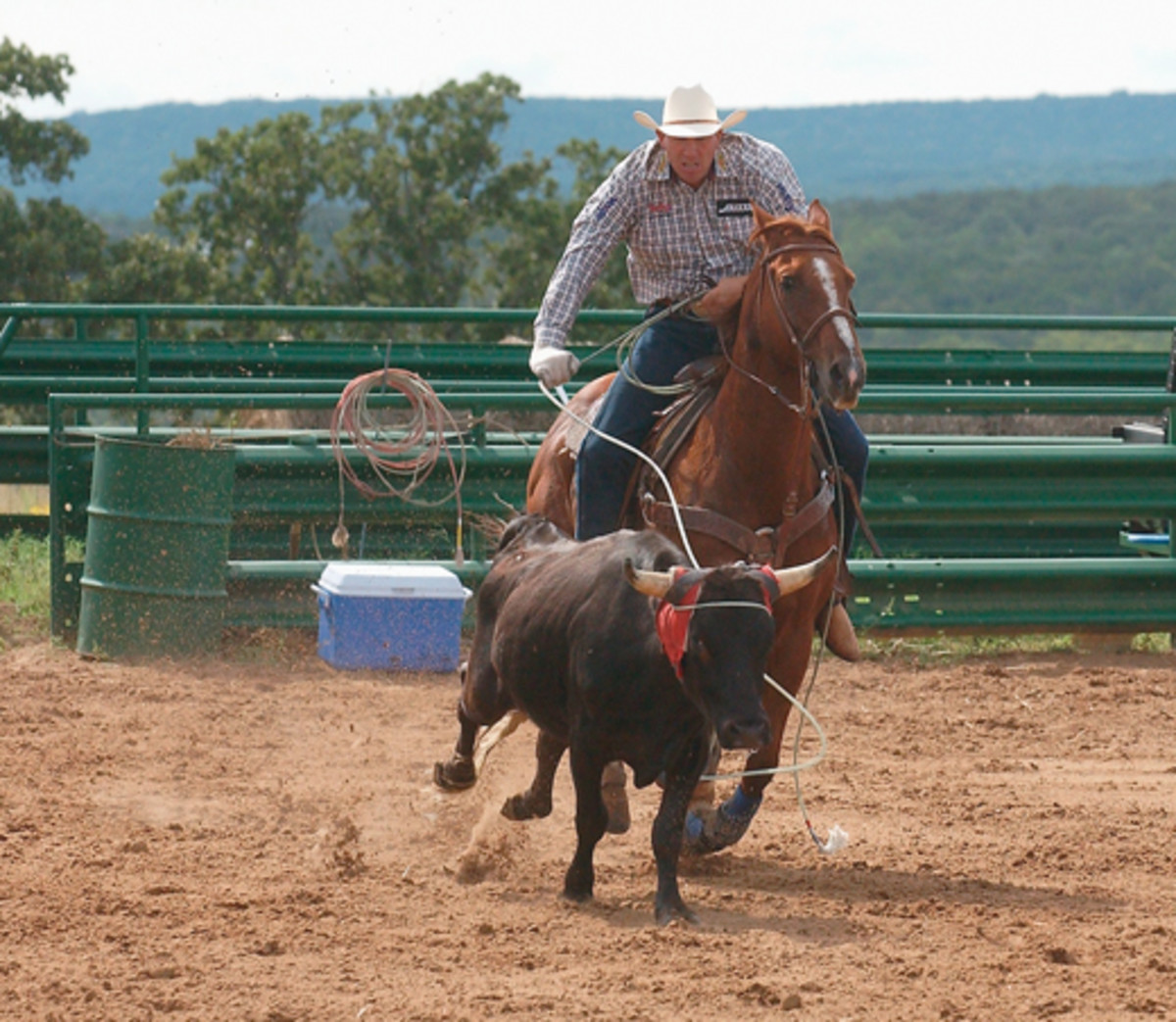I hear a lot of people say they catch all their steers, but that all the heelers catch for everybody but them. They need to take the time to consider that it might be their handles. The old cliche that “he was loose when I caught him” doesn’t win much. I hate the term “turn and burn,” ’cause a lot of time that’s what happens when the header ropes and turns off too fast.

By the time you get to the handle, you’ve gotten a lot of the major things out of the way. You’ve gotten out of the barrier and gotten it around the steer’s horns. The hard part’s over, but at that point, the run’s far from over.

Now it’s time to set the heeler up for his shot. Most of the time when a handle’s bad it’s because the header’s going too fast or too slow. A lot of novice ropers have been preached to by their novice heelers to rope the steer and get out of the way. But roping and turning is the worst thing you can do to create a bad handle, because the heeler gets no read on the steer and what he’s going to do next. There is no read around the corner.

The reason the low-numbered heelers want that done is because their heel horses cut that corner. They figure if the header drops out of there and their heel horse cuts the corner, they’ll be in the right spot to take their shot. But there’s a domino effect there. Pretty soon, the head horse will start anticipating and going left too soon, and the wreck will be on.

This is why the pros work on their horses working perfectly in the practice pen, headers and heelers both. You might rope one quick, but then you dally and follow the steer three or four jumps to get rid of that anticipation of going left

The steer you draw dictates the handle, but as a general rule of thumb, the faster a steer runs, the more your horsemanship will come into effect. If you rope and turn right off, that steer’s going to run up the rope 100 miles an hour and he’s going to be almost impossible to heel. You need to rope a fast steer and hold him in that pocket. You don’t need to pull a steer like, because with all that momentum he’s going to want to go out of there fast on his own.

I like a head horse that really uses his hind end, so I can hold steers up in the corner. One of the things I look for in a head horse is one that’ll let me get a steer’s head and hold him in the pocket before I make that turn. That’s how I keep control of a steer and dictate how fast I want him to go out of there.

There are basically three styles of steers. The first kind is the fast one that runs hard. That’s the one where you need total control of your head horse so you can break that steer’s speed down. If you let your head horse drop his shoulder, that steer’s going to whip on the end of the rope and will usually run up the rope.

The second type of steer runs about medium. On a steer like that, you need to run up there, rope him and go to the horn. You won’t spend as much time setting a medium-running steer. The reason you don’t spend as much time in the hole on a steer like that is because you’ll stall him out in the corner. You never want to stall a steer on the corner, or your heeler will have to stop and rope the steer going away from him. That’s a low-percentage shot.

The third kind of steer is the money steer. He’s the kind the pros drool over. When you draw the money steer you have to be ready to rope quicker. A slow steer will usually slow up when you run up on him, which increases your chances of waving it off. You need to gauge your approach so you don’t overrun your shot. Once he’s caught, you don’t want to set a slow steer at all, because he’s already wanting to get heavy and stall. Slower steers will shuffle or drag if you stay in the hole too long, so you want to go ahead and rope and turn off.

I don’t want my horse to use his hind end on a slower steer. I’m going to be ready to rope sooner, so I can move out to the side and keep that steer moving through the corner, so he doesn’t trot or drag.

The perfect steer is the one that doesn’t run very hard. He comes out of the chute and gradually rolls to the left. When you stick it on him, he basically turns himself. What you need to do is push your horse pretty hard out in front of him.

It’s ridiculous to expect your heeler to rope two feet consistently if he’s getting a bad corner and the steer’s being handled too fast or too slow. The steer and the head horse dictate the handle. Whether you’re heading, heeling or roping calves, it all boils down to how much control you have of your horse. And that all boils down to your left hand. If your brain’s connected to your left hand throughout your run, you’ll have control throughout your run.










